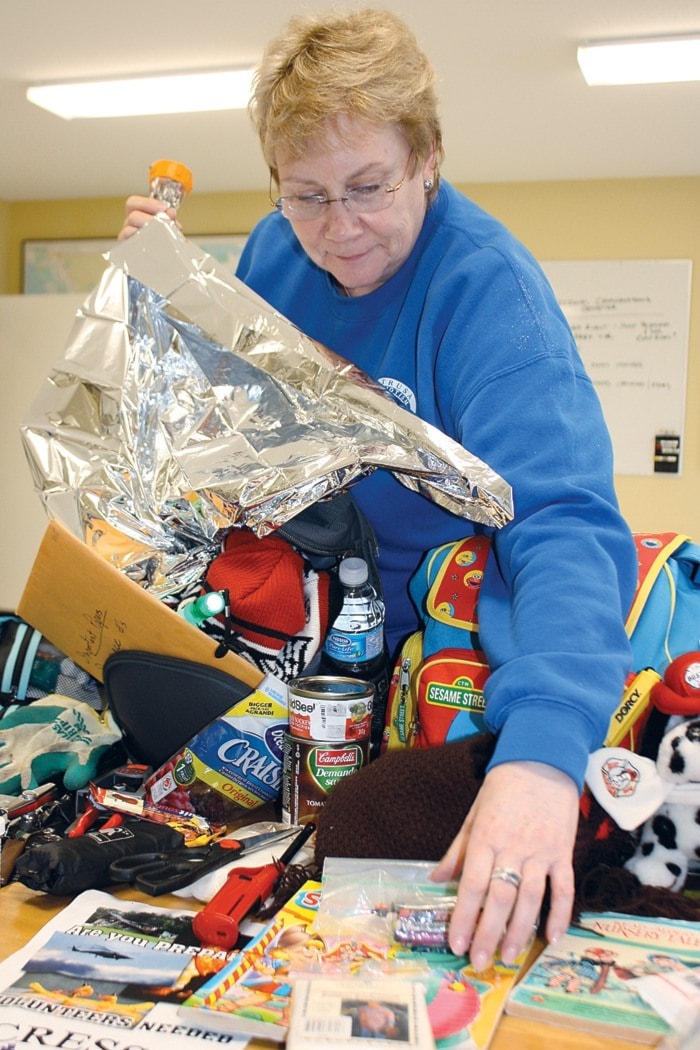Much of Vancouver Island was on high alert last Friday morning with the potential threat of a tsunami after the devastating 8.9 earthquake in northeast Japan.
Although Campbell River was never in any real danger, that may not always be the case.
If an earthquake hit closer to home, a tsunami is something people need to be aware of and they need to know what to do, says Howie Siemens, deputy emergency program co-ordinator for the Strathcona Regional District.
“Campbell River is in a lower risk area when it comes to tsunamis because by the time it would reach us, the power of the waves would have been dispersed by the islands and channels nearby,” Siemens says. “I’m not saying we wouldn’t get a tsunami but we wouldn’t be devastated by a tsunami.”
Siemens says the number one thing people need to remember is, after an earthquake, head to higher ground because a trembler in local waters will more than likely trigger a tsunami.
“We can’t predict the size of the wave that’s coming, so the higher you can get, the better,” he says. “Of course it’s not only the height of the wave but the force that you have to be aware of. They can travel up to 300 to 400 miles per hour. You see in Japan that it’s lifting up houses and tractor trailers like they’re nothing – just bathtub toys.”
Siemens says although scientists can’t be certain, it’s estimated that if a tsunami was headed for Campbell River, people would have roughly 15 minutes to evacuate any low lying areas and head inland.
Once the Strathcona Regional District, which co-ordinates the city’s emergency program, receives a tsunami warning from the Provincial Emergency Program, a media release is sent to all local radio stations. The greater the risk, the more information that is shared with the public.
The province identifies four types of tsunami bulletins, with a tsunami warning the most serious.
Friday morning’s bulletin was a tsunami advisory, the third highest level of tsunami alert.
Siemens says if Campbell River was issued a tsunami warning, the message to get to higher ground would be broadcast over the radio almost instantly.
More than 30 feet (about 10 metres) from the ocean is best, up into the Dogwood area.
A mass e-mail would also be sent out to all first responders, RCMP vehicles and fire trucks would be dispatched to spread the message through their loud speakers to evacuate areas near the water.
People can also sign up to have earthquake notifications sent to their cell phones by registering online: https://sslearthquake.usgs.gov/ens/
Siemens says the regional district is also looking into putting emergency alerts on its website as well as setting up a Facebook page.
After a tsunami, several relief shelters would welcome those affected.
Timberline Secondary School would be one of multiple emergency shelters operated by local Emergency Social Service volunteers to provide food and blankets and other emergency supplies. But in the wake of a disaster, not everyone may be able to get themselves to a shelter which is why it’s important to have a grab-and-go kit in your home that has a blanket, food, water, any prescriptions, a flashlight and scissors. For children, pack a book or a stuffed animal, anything to provide them with some comfort.
Siemens says bottomline, the most important thing is awareness.
“Japan was a good example of what we can expect with The Big One,” he says. “It dropped off all communication signals and their tsunami warning system occurred but there was not a lot of time and people were not too reactive to it. People were going to watch (the tsunami), not understanding the strength of it. Something we learned from Japan was maybe we should have maps on our website to show people if they are living in an area of risk.”
Siemens says Campbellton, low lying areas of Willow Point and downtown areas would be most vulnerable in the event of a tsunami.
